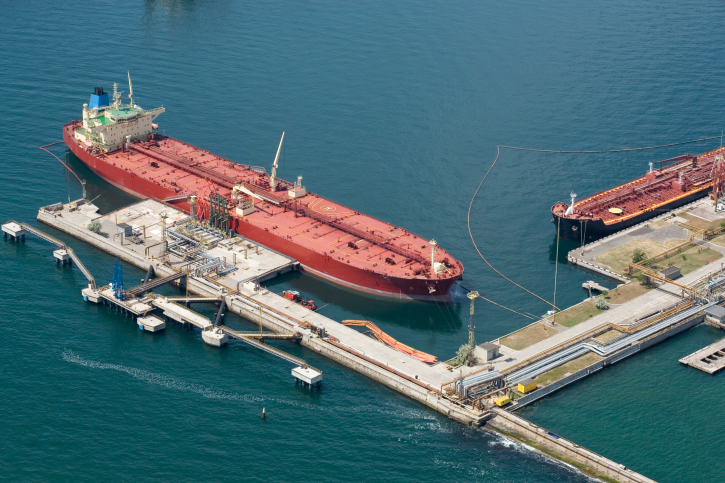A natural gas export facility on Chesapeake Bay would have no significant impact on the environment, the Federal Energy Regulatory Commission determined in a draft report. The finding is a major setback for environmental activist groups claiming liquefied natural gas export facilities pose a substantial threat to the environment.
‘No Significant Impact’
The Federal Energy Regulatory Commission (FERC) issued a 241-page environmental assessment addressing a proposed liquefied natural gas (LNG) export terminal in Cove Point, Maryland. The May 15 assessment determined the export facility would have “no significant impact” on the environment.
“The adverse cumulative impacts that could occur in conjunction with the project would be temporary and minor,” FERC explained.
The terminal would produce significant cumulative benefits, including job creation, higher wages, and economy-wide benefits resulting from the construction and operation of the facility, FERC concluded.
FERC received substantial input and assistance in making its environmental assessment. The Maryland Department of Natural Resources and the Obama administration’s Department of Energy were among the cooperating government agencies.
Positive Economic, Environmental Impacts
The finding was a huge victory for Richmond, Virginia-based Dominion Resources, which is eager to get the $3.8 billion project up and running. Located on Chesapeake Bay approximately 62 miles southeast of Washington, DC, Cove Point is slated to be the first LNG export terminal on the East Coast. FERC is expected to announce a final decision on the project by August 13.
Dominion plans to ship the natural gas to India and Japan beginning in 2017. The company already has 20-year contracts with Gail India Ltd. of New Delhi and Japan’s Sumitomo Corp. Natural gas from the United States will enable India, Japan, and other nations to expand their industrial and power plant production while emitting a minimum of the pollutants that have plagued East Asia.
Cove Point is one of 31 facilities around the country that have applied for federal approval to export liquefied natural gas. Since 2011, six of the projects—three in Louisiana and one each in Texas, Oregon, and Maryland—have received preliminary approval. Cheniere Energy’s Sabine Pass Liquefaction terminal in Cameron Parish, Louisiana has been greenlighted to begin construction and is expected to be in operation in 2015.
Energy and International Politics
With an abundant supply of natural gas extracted by hydraulic fracturing (fracking) and horizontal drilling in shale formations throughout the country, the United States is poised to fill a growing global demand for the fuel source. Russia, Norway, and Qatar currently lead the world in natural gas exports. Russia has been leveraging its exports to apply political pressure against Eastern European democracies.
Russia’s recent annexation of Crimea underscored Europe’s dependence on Russia for natural gas. Russia currently supplies approximately 30 percent of Europe’s natural gas.
Unnecessary Delays
Fearing the slow pace of federal approval for LNG export projects is undermining America’s ability to compete in a booming global LNG market, many in Congress are calling for speeding up the process. House Speaker John Boehner (R-OH) and Senate Environment and Public Works Committee Chairwoman Mary Landrieu (D-LA) are among those calling for federal officials to expedite the application process for LNG facilities.
“Once again, FERC tells us what we already knew—LNG export facilities do not pose an environmental threat,” said Dan Simmons, director of state policy at the Washington-based Institute for Energy Research.
“It’s time the federal government improved this process instead of dragging its feet on projects for the purpose of studying what we already know,” Simmons explained.
Bonner R. Cohen, Ph. D., ([email protected]) is a senior fellow at the National Center for Public Policy Research.





